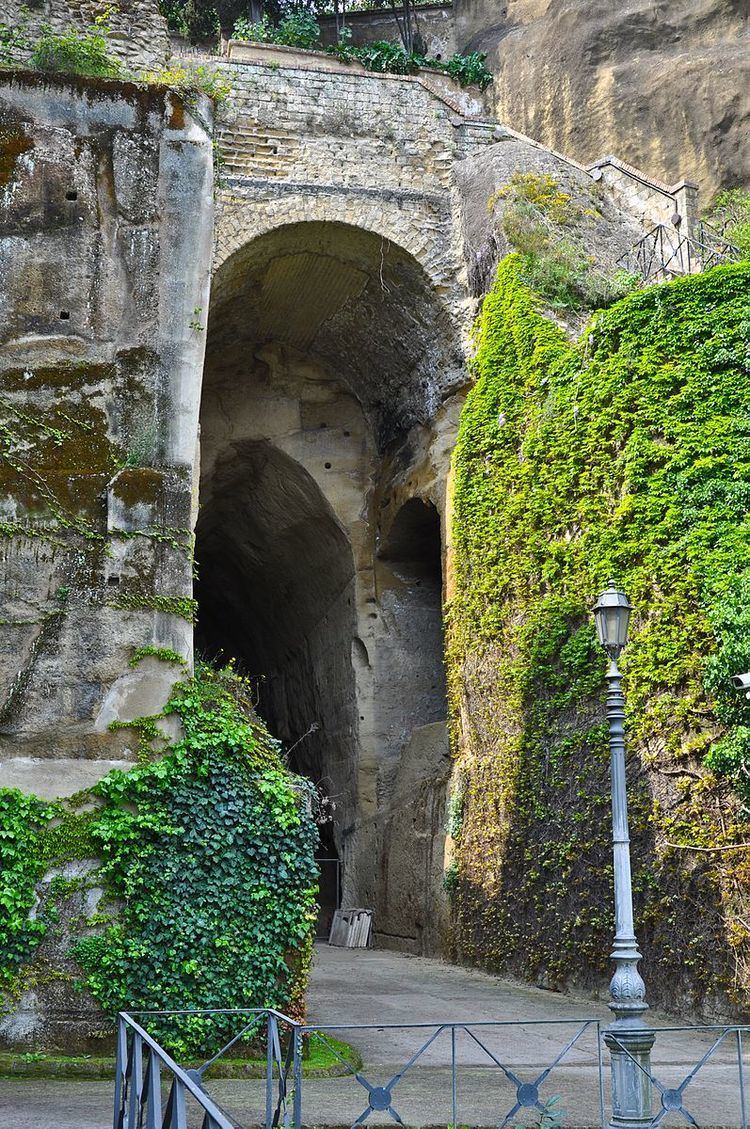 | ||
Similar | ||
La crypta neapolitana raccontata come una favola
The Crypta Neapolitana (Latin; "Neapolitan crypt"), also known as the Seiano cave, is an ancient Roman tunnel near Naples, Italy.
Contents
- La crypta neapolitana raccontata come una favola
- La crypta neapolitana e la tomba di virgilio
- Geography
- History
- References
La crypta neapolitana e la tomba di virgilio
Geography
The tunnel passes beneath the Posillipo hill and connects Naples with the so-called Phlegrean Fields and the town of Pozzuoli along the road known as the via Domiziana. The tunnel is over 700 metres long. The eastern entrance (that is, on the Naples side) is in the part of Naples known as Piedigrotta ("at the foot of the grotta"); the western end is in the area now called Fuorigrotta ("outside the grotta"). The Piedigrotta entrance is now enclosed within an archaeological park, and the site of the villa of Vedius Pollio, and later imperial villa. The site is also noteworthy for the presence of the so-called Virgil's tomb, as well as the tomb of the Italian poet Giacomo Leopardi. Three secondary tunnels end in openings overhanging the bay, providing light and ventilation.
History
The Seiano cave is named after Lucius Aelius Sejanus, prefect of Tiberius, who according to tradition, commissioned its enlargement in the first century AD. The first tunnel was built by architect Lucius Cocceius Auctus for Agrippa during the civil war between Octavian and Sextus Pompeius in c.37 BC to connect the villa Vedius Pollio and other patrician villas of Pausilypon to the ports of Puteoli and Cumae. The tunnel is one of a number of such works in the Naples area built by Cocceius.
Fallen into disuse and forgotten over the centuries, it was discovered by chance during work on a new road in 1841 and immediately brought to light and made viable by the will of Ferdinand II of Bourbon, becoming a destination for tourists. During the Second World War was used as a bomb shelter for the inhabitants of Bagnoli; the war and some landslides during the fifties put it back into a state of neglect.
It was superseded by two modern tunnels in the early 20th century. Today it has been restored as an archaeological site.
According to medieval legend, the tunnel was built by Virgil in a single night!
